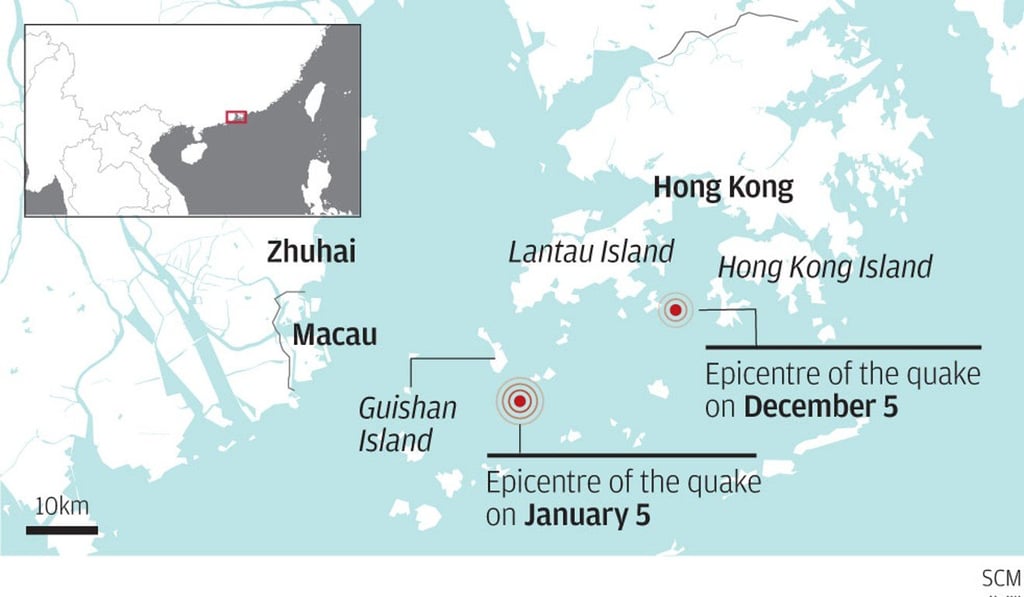Advertisement
Explainer | Recent earthquakes in Hong Kong ‘not a signal of more, or worse, to come’
- City hit by an average of two tremors each year and there have been no casualties since records began
- Observatory sees no trend of quake activity increasing, becoming more intense
Reading Time:3 minutes
Why you can trust SCMP

Some people awoke from their sleep and more than 1,200 felt vibrations when a magnitude 3.4 earthquake struck near the coast of Hong Kong early at 6.55am last Sunday.
It was the second tremor in a month. There were rumbles from an earthquake of 1.4 magnitude on December 5, with the epicentre near the outlying island of Cheung Chau.
Hong Kong has long been regarded as blessed for being affected by few natural disasters, but the recent tremors have prompted questions, not least whether they are a sign of more, or worse, to come.
Advertisement
Victor Ting finds out more about earthquakes in Hong Kong, and whether the city is resilient enough to withstand future occurrences.

Advertisement
Are earthquakes common in Hong Kong?
Advertisement
Select Voice
Choose your listening speed
Get through articles 2x faster
1.25x
250 WPM
Slow
Average
Fast
1.25x